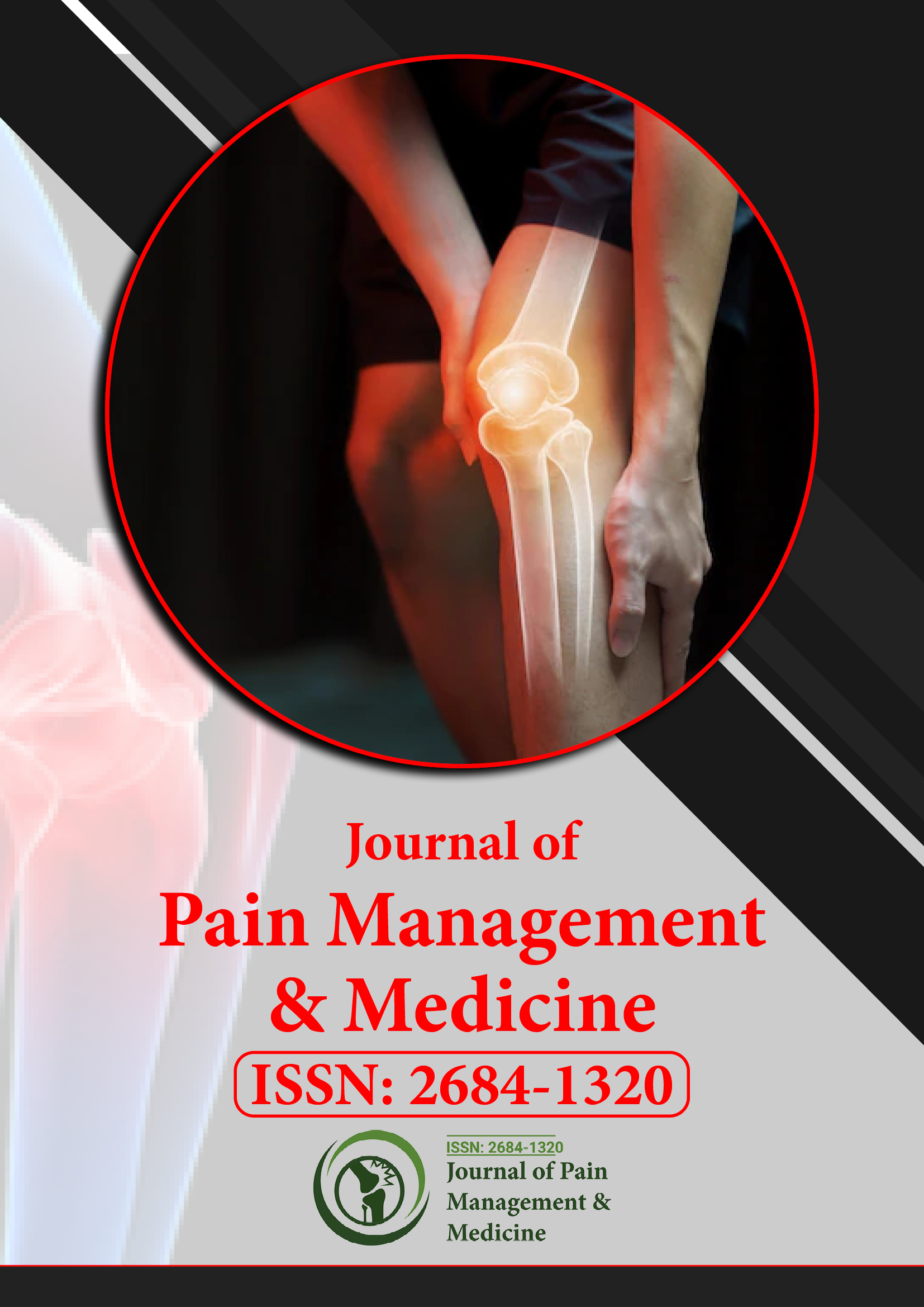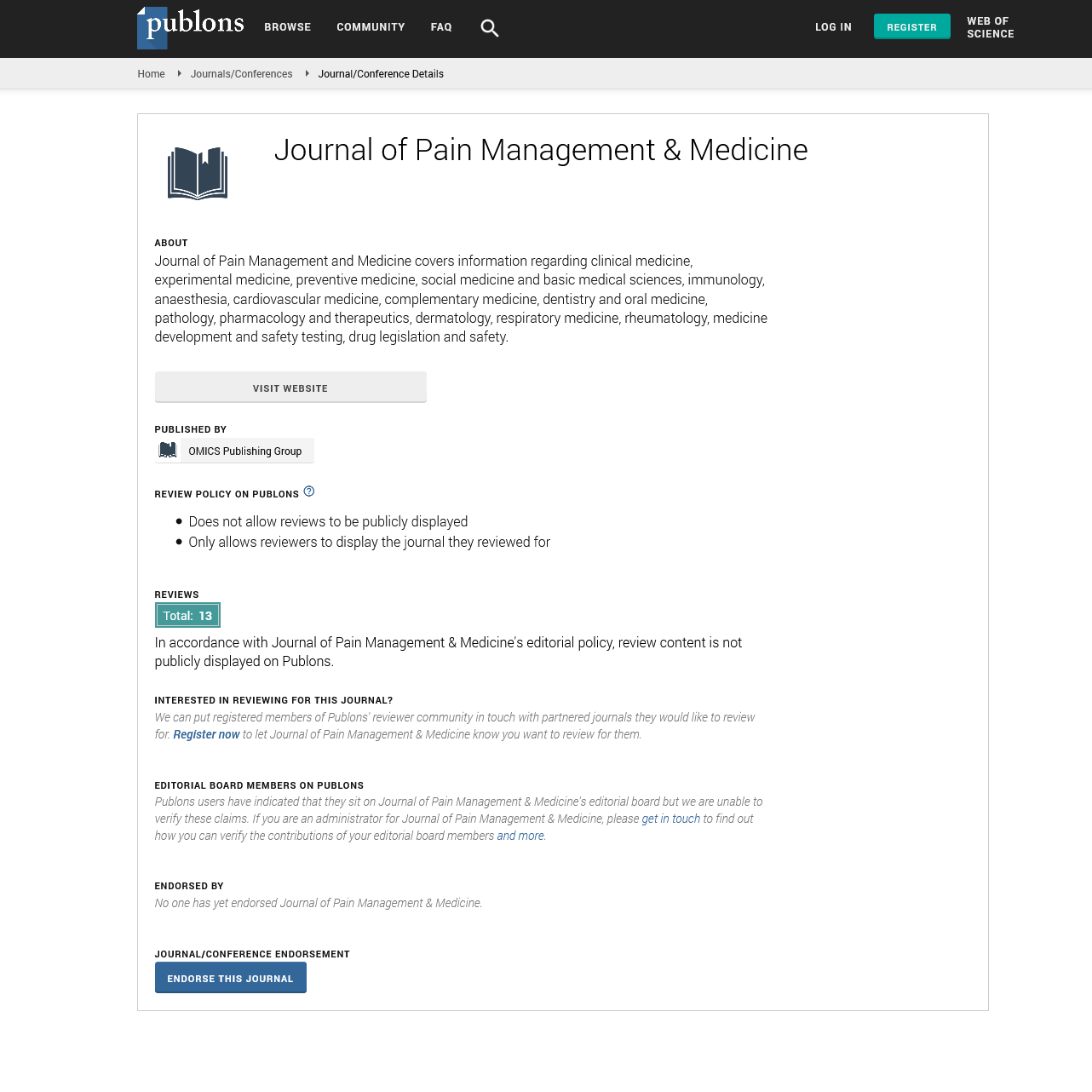Indexed In
- RefSeek
- Hamdard University
- EBSCO A-Z
- Publons
- Euro Pub
- Google Scholar
- Quality Open Access Market
Useful Links
Share This Page
Journal Flyer

Open Access Journals
- Agri and Aquaculture
- Biochemistry
- Bioinformatics & Systems Biology
- Business & Management
- Chemistry
- Clinical Sciences
- Engineering
- Food & Nutrition
- General Science
- Genetics & Molecular Biology
- Immunology & Microbiology
- Medical Sciences
- Neuroscience & Psychology
- Nursing & Health Care
- Pharmaceutical Sciences
Editorial - (2021) Volume 7, Issue 4
Chronic Pain : The Dismissed Part of Instinctive Sickness
Jack Wesselmann*Received: 22-Sep-2021 Published: 13-Sep-2021, DOI: 10.35248/2684-1320.21.7.e109
Description
Chronic pain is delegated pain that keeps going longer than three to six months. In medication, the differentiation among intense and persistent torment is once in a while dictated by the measure of time since beginning. Two normally utilized markers are torment that proceeds at 90 days and a half year since beginning, however a few scholars and analysts have set the progress from intense to persistent agony at 12 months. Others apply the term intense to torment that keeps going under 30 days, constant to torment of over a half year length, and subacute to torment that endures from one to six months. A well known elective meaning of chronic pain, including no decent span, is "torment that stretches out past the normal time of recuperating".
Chronic pain might start in the body, or in the mind or spinal rope. It is normal hard to treat. Epidemiological examinations have tracked down that 8% 11.2% of individuals in different nations have persistent broad agony. Different non-narcotic meds are at first prescribed to treat persistent agony, contingent upon whether the aggravation is because of tissue harm or is neuropathic. Mental therapies including intellectual social treatment and acknowledgment and responsibility treatment might be compelling for working on personal satisfaction in those with ongoing torment. Certain individuals with persistent agony might profit from narcotic treatment while others can be hurt by it. Individuals with non-malignant growth torment who have not been helped by non-opoid meds may be prescribed to attempt narcotics in case there is no set of experiences of substance use issue and no current psychological maladjustment. In the event that the ongoing aggravation isn't mitigated, narcotics ought to be ceased.
Individuals with constant agony will in general have higher paces of melancholy and albeit the specific association between the comorbidities is indistinct, a recent report on neuroplasticity found that "injury tangible pathways of body torments have been displayed to have a similar cerebrum locales engaged with disposition the executives." Chronic torment can add to diminished actual work because of dread of aggravating the torment. Agony power, torment control, and versatility to torment can be impacted by various levels and kinds of social help that an individual with persistent torment gets, and are additionally affected by the individual's financial status.
One way to deal with anticipating an individual's encounter of ongoing pain is the biopsychosocial model, as per which a singular's encounter of persistent torment might be influenced by a complicated combination of their science, brain research, and their social climate.
The International Association for the Study of Pain characterizes constant torment as agony with no natural worth, that perseveres past ordinary tissue recuperating. The DSM-5 remembers one constant torment problem, substantial side effect issues. The rules incorporate agony enduring longer than a half year.
The International Classification of Disease, Eleventh Revision (ICD-11) recommends seven classifications for constant torment. Constant essential agony: characterized by 90 days of determined torment in at least one locales of the body that is unexplainable by another aggravation condition.
Constant disease torment: characterized as malignancy or therapy related instinctive (inside the interior organs), musculoskeletal, or hard pain. Chronic post-horrendous torment: torment enduring 3 months after a physical issue or medical procedure, barring irresistible or prior conditions.
Citation: Wesselmann J (2021) Chronic Pain: The Dismissed Part of Instinctive Sickness. J Pain Manage Med. 7:e109.
Copyright: © 2021 Wesselmann J. This is an open-access article distributed under the terms of the Creative Commons Attribution License, which permits unrestricted use, distribution, and reproduction in any medium, provided the original author and source are credited.

